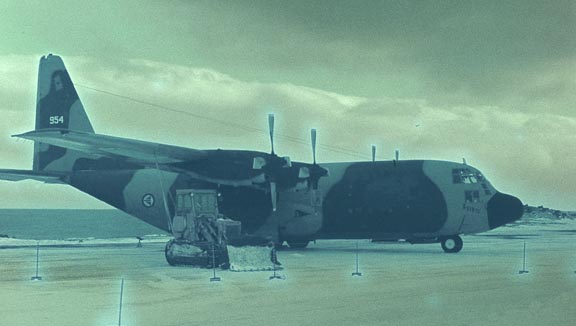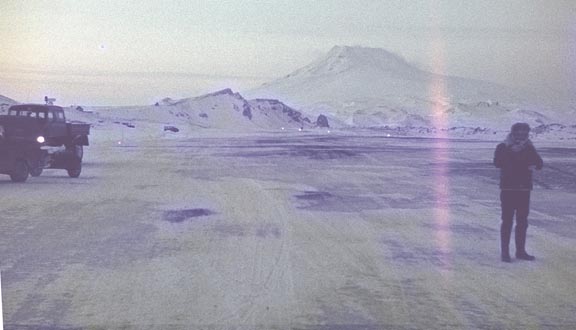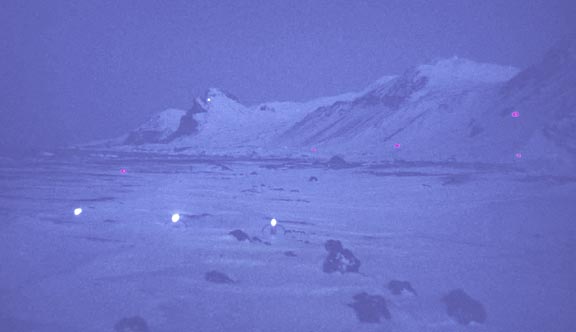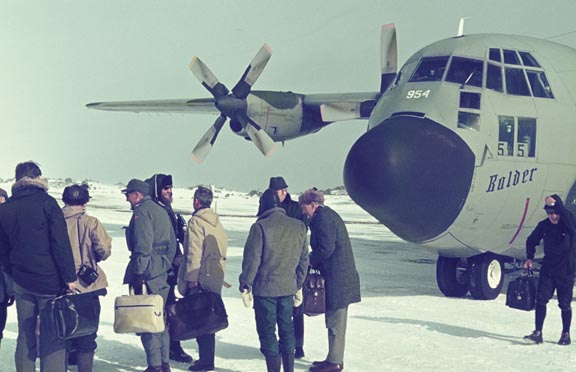Getting There is Half the Fun: Airflight to Jan Mayen, February 1973 Almost in the middle of the Norwegian-Greenland Sea lies a 55 km-long, 373 km2 nearly barren island called Jan Mayen. It is noted for its foul weather, abundant bird life, and Beerenberg, a 2277 m-high stratovolcano, the northernmost active volcano in the world. A vacation paradise it is not, but for geologists it is a wonderland of volcanism, glaciers, and earthquakes. On September 18, 1970, a rift eruption commenced on the north flank of Beerenberg, producing a towering, ash-laden eruption cloud that was seen by trans-polar airline pilots, but not by 22 unaware personnel staffing the Norwegian-run weather and navigation station about 30 km from the eruption site. Once the staff learned of the eruption, they evacuated the island with considerable difficulty, not knowing the extent of the eruption or the dangers it could present. The staff returned a few weeks later once it was realized that the eruption was localized and far from the station. Beerenberg calmed down after several months but erupted again in 1985. As a first step toward possible prediction of future eruptions, some scientists from the Norwegian Polar Institute and I traveled to Jan Mayen in the dead of winter, 1973, to set up a couple of tiltmeters on Beerenberg. We flew from Oslo to Jan Mayen on a Royal Norwegian Air Force C-130, 'Balder', named for the Norse god of goodness and light. The plane was packed full. In addition to us human passengers, 'Balder' carried a full load of lumber in its cargo bay as well as sufficient fuel for the return trip, because Jan Mayen lacked refueling and maintenance facilities.
The landing strip on the island is over a mile long with a dog leg about two-thirds the way down its length. The runway is completely covered by snow and ice in winter; darkness prevails around the clock there in February at 71° N latitude. To complete the challenging conditions, a 40-knot wind was blowing across the strip on the day we were to land.
The air force pilot made one . . . . . two . . . . . .three . . . . .four attempts to land from south to north, but the crosswind made him pull up each time. Finally, he swung the plane around and attempted the north-to-south approach. He lined up 'Balder' at the top of the dogleg and pushed the heavily laden craft down in a powered descent. About 15 meters above the runway, he let the aircraft drop with a deafening, shuddering crash. I thought 'Balder' would split asunder and spill us all—lumber, fuel, people—over the frozen runway. At best, I figured we'd be marooned on Jan Mayen for weeks until repairs could be made or another plane procured to fetch us. But instead, we simply taxied to the end of the runway and came to a controlled stop. 'Balder' stopped shuddering long before I did.
Several hours later over a beer with the pilot and glad to be alive, I commented about his rough landing with such a heavy load. With the cocky insouciance of all military pilots, he merely replied, "That's how it had to be done. The C-130 is a helluva bird. No problem with hard landings." |
Return to Home Page | Return to Gallery Page | Top of Page




